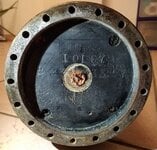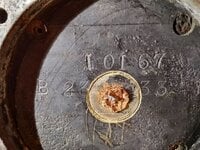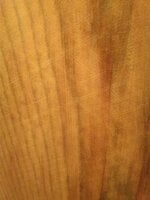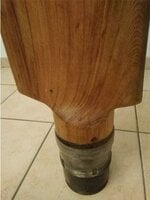The red dots are explained here: ROTOL Propeller Markings and Information
Andy, IMHO that's not the point. Our mate asked about the "red" dot seen in the pic above. I have enlarged this. See below.
The link you posted is about the Disk(s) actually identfying not the prop blade manufacturer but the meaterial it was made of. Usually there was some of the additional blade data info applied on the disk, eg.. the covering type, sheath kind. Also it was of different colour in order to indicate the balde structure. The requested dot is noting more but a small dot made of a pink ( IMHO) colour made by somebody with a brush and doesn't have anyting in common with the true disk painted on the balde. See below.






